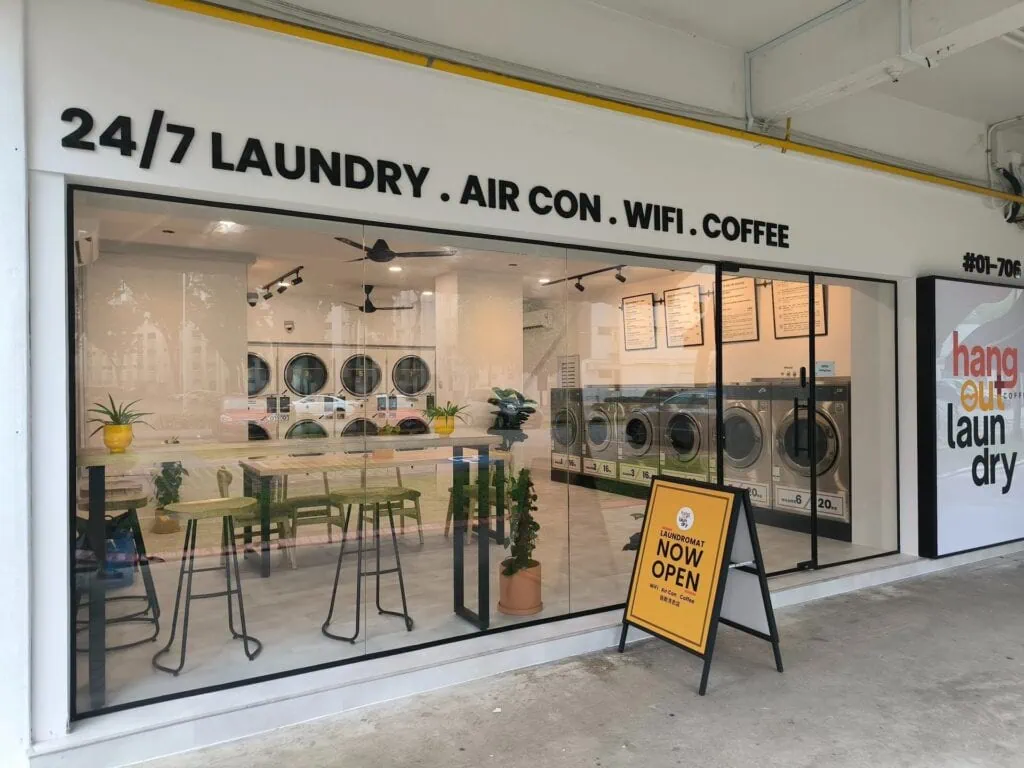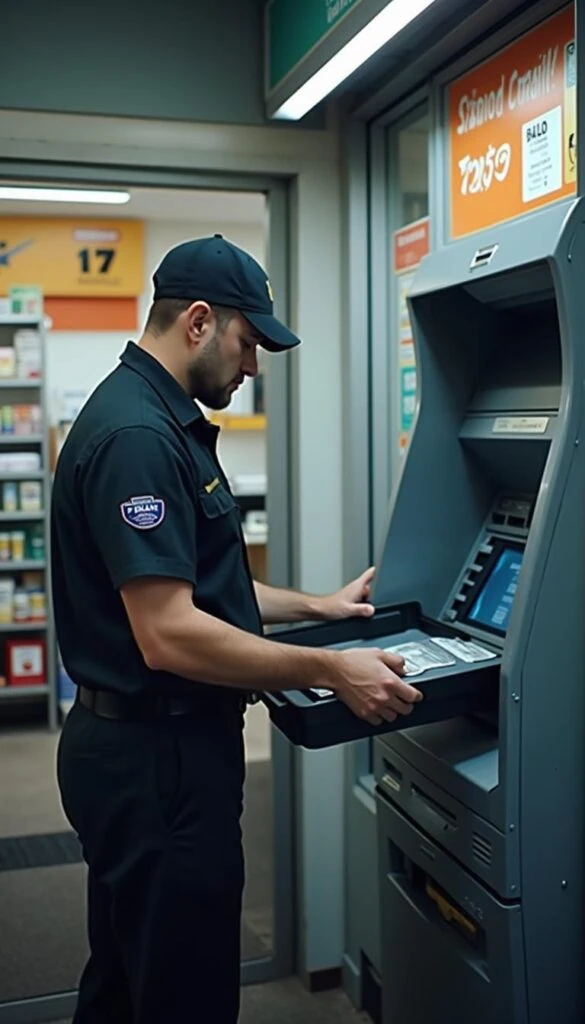When most people dream about starting a business, they picture the next big tech app, a trendy café, or some flashy product going viral on TikTok.
But here’s the truth: the businesses quietly raking in $100K+ every month are often nothing like that.
They’re not glamorous. They’re not exciting. Some might even seem downright boring. But they solve everyday problems, operate in evergreen industries, and scale like crazy — without all the hype.
These “boring businesses” may not make headlines, but they consistently make money.
And in this article, we’ll show you how they do it — and why they might be the smartest type of business to start in today’s economy.
What Is a ‘Boring’ Business, Really?
A “boring business” isn’t actually boring — at least not when it comes to profits.
The term refers to businesses that fly under the radar. They aren’t trending on social media or featured in startup magazines. But they provide essential services, often with less competition, lower overhead, and more predictable income.
Think cleaning companies, vending machine operators, laundromats, pest control services. They don’t need to reinvent the wheel — they just need to keep it turning.
What makes them powerful:
- Stable demand: These are services people or businesses always need.
- Low emotional attachment: Less ego, more margin. Most founders aren’t trying to be famous — just profitable.
- Simple operations: Many of these businesses follow a repeatable system, making them easier to scale.
- Underserved markets: Because they’re “boring,” fewer entrepreneurs are rushing in, which leaves opportunity wide open.
In short, boring businesses aren’t boring to your bank account.
Many of these boring businesses follow a proven, time-tested business model that focuses on recurring revenue, low overhead, and solving unglamorous but essential problems.
Top 10 Boring Businesses To Make Money
Commercial Cleaning Services
Every office, medical clinic, school, or industrial facility needs to stay clean — not just for appearances, but for safety, compliance, and employee satisfaction. That creates recurring demand for cleaning services that operate after hours, on autopilot.
How They Make Money
Commercial cleaning companies usually work on monthly contracts, which brings predictable cash flow. Many scale by hiring subcontractors or hourly workers, then layering in additional services like carpet cleaning or window washing for extra upsell opportunities.
Example
Take the story of Office Pride, a U.S.-based franchise system where many operators report revenues well above $100K/month by managing multiple client accounts and employing part-time staff. Even small independent operators often generate $30K–$50K/month once they have consistent contracts — and that’s with relatively low overhead.
Monthly Revenue Breakdown (Sample)
- 20 contracts at $5,000/month each = $100,000/month
- Labor costs: ~$40,000
- Supplies + overhead: ~$15,000
- Net margin: ~45%
What You Can Learn
This business thrives on consistency, relationships, and systems — not creativity or charisma. If you’re process-driven and good at managing teams, this can be an ideal model to scale without needing to be “the face” of the brand.
Laundromats
Laundromats are the definition of passive income when done right. Once machines are installed and running, customers serve themselves — often 7 days a week — and revenue rolls in with minimal staffing needs.
How They Make Money
Laundromats earn money per wash and dry cycle, and many add vending machines or detergent sales for extra income. Some operators offer premium services like wash-and-fold or pickup and delivery to increase margins and reach.
Example
A single laundromat can bring in $20K–$40K/month depending on location, foot traffic, and machine volume. Operators with multiple locations or value-add services often cross the $100K/month mark. Some even run 100% unattended, using security cameras and remote payment tech.
Monthly Revenue Breakdown (Sample)
- 60 machines averaging $5 per load × 25 uses per day = $112,500/month
- Utilities + rent: ~$25,000
- Maintenance + supplies: ~$10,000
- Net margin: ~65%
What You Can Learn
The laundromat model is attractive because it’s steady, predictable, and relatively easy to automate. But the real opportunity is in rebranding the experience.
Think: Laundry + Coffee Shop Hybrid.
Instead of plastic chairs and flickering lights, imagine comfy seats, good coffee, Wi-Fi, and a place where people want to stay. These “premium laundromats” charge more, get more foot traffic, and tap into an underserved middle/upper-class market.
Septic Tank Cleaning
It might not smell like success, but it certainly pays like it. Septic tank services are a classic example of a high-demand, low-glamour industry where few people want to do the work — which is exactly why it’s profitable.
How They Make Money
Homeowners and businesses with septic systems need regular pumping and inspections — typically every 3–5 years — and emergency cleanouts can cost even more. Companies charge per job, with additional fees for after-hours or difficult access.
Example
A solo operator with one truck can earn $20K–$30K/month working full time. But companies with two or more trucks — especially those offering emergency services — often pull in over $100K/month, particularly in rural areas or growing suburban communities.
Monthly Revenue Breakdown (Sample)
- 10 jobs/day × $400 = $120,000/month
- Truck + fuel + disposal fees: ~$25,000
- Labor (driver + assistant): ~$20,000
- Net margin: ~60%
What You Can Learn
This industry is protected by one big moat: no one wants to do it. That means less competition, high urgency from customers, and strong pricing power. With just a few trucks and a reliable team, this “dirty” business can clean up in a major way.
Self-Storage Units
Minimal staff. Recurring payments. Virtually recession-proof. Self-storage might be one of the most boring — and most profitable — real estate plays available today.
How They Make Money
Self-storage businesses rent out units of various sizes on a monthly basis, much like mini real estate investments. Upsells include climate-controlled units, 24/7 access, insurance, and even late fees.
Example
A single mid-sized facility with 300+ units can generate over $100K/month in revenue, especially in urban or fast-growing suburban areas. Many owners use digital locks, keypads, and security systems to run the facility semi-automatically with just 1 or 2 employees — or even remotely.
Monthly Revenue Breakdown (Sample)
- 350 units × $300 average monthly rent = $105,000/month
- Operational expenses: ~$20,000
- Property maintenance + taxes: ~$10,000
- Net margin: ~70%
What You Can Learn
Self-storage is a “set it and forget it” model when properly managed. It’s a long-term asset with reliable income and low churn. While startup costs (land + construction) can be high, this is a business that scales and holds value — and rarely goes out of style.
Parking Lot Striping
Most people never think twice about those crisp white and yellow lines in parking lots. But for striping businesses, those lines represent cold, hard cash — and lots of it.
How They Make Money
Parking lot striping companies are typically hired by commercial properties, malls, schools, hospitals, and municipalities. Services include line painting, directional arrows, handicap zones, and sometimes sealcoating or signage. Jobs are usually billed per linear foot or by the total square footage.
Example
A single crew can complete 2–4 jobs per day, especially during spring and summer months. Many operators report earning $3,000–$6,000 per job, depending on complexity. Scaled businesses with multiple crews and trucks often cross $100K/month, especially with recurring contracts for maintenance.
Monthly Revenue Breakdown (Sample)
- 60 jobs/month × $2,500 average = $150,000/month
- Paint, equipment, and fuel: ~$15,000
- Labor (2–3 crews): ~$30,000
- Net margin: ~70%
What You Can Learn
Striping is a niche service with low competition, low overhead, and high margins. It’s seasonal in many regions but can be extremely lucrative during peak months. Best of all? Most jobs are completed in a few hours, and clients pay fast — because no one wants a non-functional parking lot.
ATM Route Businesses
While everyone talks about going cashless, cash is still king in many places — and ATMs are quietly generating thousands for the people who own them.
How They Make Money
ATM operators make money from surcharge fees every time someone withdraws cash. You place machines in high-foot-traffic areas (like convenience stores, bars, dispensaries, or barber shops) and earn a fee per transaction — typically $2.50 to $3.50.
Example
Let’s say you own 30 ATMs spread across busy locations. Each machine gets used 10 times a day with a $3 surcharge. That’s $900/day — or $27,000/month. Operators with 50+ machines routinely make $100K+/month, especially if they manage the machines themselves and keep overhead low.
Monthly Revenue Breakdown (Sample)
- 50 machines × 10 uses/day × $3 = $45,000/month
- Additional earnings from partnerships or placement fees = ~$10,000
- Vaulting (refilling cash) + maintenance: ~$15,000
- Net margin: ~60%
What You Can Learn
This is the definition of a set-it-and-collect business. Once installed and stocked, ATMs generate recurring income without needing daily management. It’s especially powerful when scaled across dozens of locations — and can run quietly in the background while you focus on other ventures.
Vending Machines
Snacks, drinks, electronics — vending machines can sell almost anything, and they operate 24/7 without employees. It’s one of the easiest ways to turn a boring box into a money machine.
How They Make Money
Vending machine owners earn by placing machines in high-traffic spots (offices, gyms, schools, malls) and stocking them with products. Revenue comes from product sales, and owners profit by buying inventory in bulk and marking up prices. Some negotiate commission deals with location owners, while others offer revenue-sharing.
Example
An average vending machine can make $300–$600/month — but in a great location, that number can exceed $1,000. Entrepreneurs with 100+ machines across a city often make $100K/month, especially if they optimize routes and outsource restocking.
Monthly Revenue Breakdown (Sample)
- 120 machines × $900/month = $108,000/month
- Inventory cost (40% of sales): ~$43,000
- Maintenance + logistics: ~$10,000
- Net margin: ~50–55%
What You Can Learn
Vending is all about location and logistics. Find the right spots, stock what people actually want, and you can build a quiet empire. Add a layer of software for remote inventory tracking and cashless payments, and it becomes even more scalable — and passive.
Portable Toilet Rentals
They’re ugly. They smell. And they’re incredibly profitable. Portable toilet rentals are essential for construction sites, outdoor events, festivals, and emergency relief zones — which means demand is constant.
How They Make Money
Companies rent out portable toilets on a weekly or monthly basis, charging for delivery, setup, cleaning, and pickup. Upsells include handwashing stations, luxury units, ADA-compliant models, and more frequent service schedules.
Example
Even small operations with 50–100 units can pull in $30K–$50K/month. Larger operators with hundreds of units — especially those with government or construction contracts — regularly bring in $100K/month or more, with predictable cash flow and minimal marketing.
Monthly Revenue Breakdown (Sample)
- 250 units × $450/month average = $112,500/month
- Maintenance staff + pump trucks: ~$25,000
- Fuel, supplies, and disposal fees: ~$15,000
- Net margin: ~60–65%
What You Can Learn
No one wants to be in this business — and that’s the opportunity. With relatively low competition, high demand, and the ability to secure long-term contracts, this “gross” business is actually a clean bet for serious cash flow.
B2B Maintenance Services (HVAC, Pest Control, Plumbing, etc.)
These are the behind-the-scenes heroes of every building and business. While consumers rarely notice them, companies can’t operate without them — and they pay handsomely for fast, reliable service.
How They Make Money
These businesses typically make money through service calls, maintenance contracts, and emergency repairs. The B2B angle (serving offices, restaurants, warehouses, etc.) brings in higher-volume, higher-ticket clients with repeat needs. Many also offer annual maintenance plans to lock in predictable revenue.
Example
An HVAC company with 3–5 technicians can easily earn $100K+/month, especially when focused on commercial clients. Pest control businesses offering monthly or quarterly service retain clients for years and scale with minimal equipment.
Monthly Revenue Breakdown (Sample – HVAC Focused)
- 200 service calls/month × $500 = $100,000/month
- Technician salaries: ~$35,000
- Parts, vehicles, insurance: ~$20,000
- Net margin: ~45–50%
What You Can Learn
Boring? Maybe. But these services are non-negotiable for any property that needs to stay safe, clean, and operational. The key is building a reliable brand, hiring quality techs, and locking in long-term contracts. From plumbing to pest control, there’s massive opportunity in being the go-to local expert.
Car Washes
They’re everywhere, they don’t require much staff, and they’re always in demand — especially in cities and suburbs. Car washes may not be flashy, but they’re a proven machine for recurring revenue.
How They Make Money
Car washes earn through one-time washes, subscription packages, and upsells like wax, tire shine, or vacuuming. Many modern car washes are fully or semi-automated, running with minimal labor and operating nearly 24/7.
Example
A single express tunnel car wash in a good location can generate $70K–$100K/month. Add a few more locations or a strong membership model (e.g. unlimited monthly washes for $25), and you’ve got a business doing well over $100K+/month consistently.
Monthly Revenue Breakdown (Sample)
- 4,000 cars/month × $25 average ticket = $100,000/month
- Utilities + maintenance: ~$12,000
- Staff (attendants + manager): ~$15,000
- Chemicals + supplies: ~$8,000
- Net margin: ~60–65%
What You Can Learn
Car washes are operationally simple, location-dependent, and incredibly profitable when automated. Add a modern twist — like mobile app memberships or eco-friendly branding — and this “boring” business becomes a sleek, scalable cash flow engine.
Why These Boring Businesses Work So Well
It’s not a fluke. The businesses listed above aren’t just random cash cows — they follow a pattern that makes them ideal for long-term, sustainable growth.
Here’s what they all have in common:
1. Recurring Demand
Toilets always need cleaning. Cars always need washing. Bugs always need spraying. These businesses solve problems that never go away — regardless of trends, economic shifts, or technology changes.
2. Low Competition (Because They’re Not Sexy)
Everyone wants to launch the next big app or e-commerce brand. Very few people are excited to start a septic tank cleaning company. That lack of hype creates opportunity — less competition, more pricing power.
3. Simple Systems = Easy to Scale
Most of these businesses follow repeatable, process-driven operations. That makes it easier to train staff, replicate locations, or even franchise the model once it’s dialed in.
4. High Margins (When Run Efficiently)
Because these businesses often rely on equipment or recurring contracts — not high labor or marketing costs — many enjoy profit margins north of 50%, especially once scaled.
5. Recession-Resilient
They aren’t luxury-dependent. In downturns, people may cut streaming services — but they’ll still need plumbing, pest control, and laundry. That makes these businesses remarkably stable during uncertain times.
6. Real, Local Moats
Most boring businesses serve a geographic area, which creates a natural barrier to entry. Once you’re the go-to name in a region, new competitors have a hard time breaking in — especially if you’ve locked in clients with contracts.
Can You Start One? What to Consider
These businesses may seem simple — and many are — but starting one still requires planning, grit, and smart execution. Here’s what to think about before diving in:
1. Startup Costs
Some boring businesses (like vending machines or pressure washing) have low barriers to entry and can be launched with just a few thousand dollars. Others — like car washes or self-storage — require significant upfront capital or financing.
Tip: You don’t need to buy everything new. Many successful operators start by purchasing used equipment or acquiring small existing businesses.
2. Licensing, Permits & Regulations
“Boring” often means regulated. Septic services, pest control, HVAC — these all require certifications or local licenses. Do your homework on legal requirements before launching.
3. Market Demand in Your Area
What’s boring and profitable in one city might flop in another. For example, laundromats work well in dense urban areas with apartment dwellers but struggle in suburban neighborhoods where everyone has a washer and dryer.
Use tools like Google Trends, Yelp, or even Craigslist to research demand and competition locally.
4. Recurring Revenue Opportunities
The most scalable boring businesses aren’t based on one-time transactions — they’re built on monthly contracts, memberships, or retainer-based services. Prioritize models that bring in consistent, predictable income.
5. Do You Want to Work In It or On It?
Some founders start solo — cleaning, restocking, driving trucks — then scale once they prove the model. Others want to manage from day one. Either way is valid, but your startup plan should reflect the role you actually want.
6. Room for Modernization
Just because it’s boring doesn’t mean it has to feel outdated. Many entrepreneurs stand out by adding tech, branding, or convenience to stale industries — think online booking, cashless payments, eco-friendly messaging, or even bundling services.
Final Thoughts
It’s easy to overlook these types of businesses — until you see the numbers.
They’re not trending on Twitter. They’re not showing off on Shark Tank. But they work. Quietly, reliably, and profitably.
Boring businesses thrive because they solve problems people can’t ignore. And when you stack recurring revenue, operational simplicity, and low competition, you get a business model that outperforms the hype — month after month.
So if you’re tired of chasing the next big thing, maybe it’s time to look at what’s already working in plain sight.💡 The next big opportunity might just be a “boring” business no one else is willing to start — but everyone needs.











